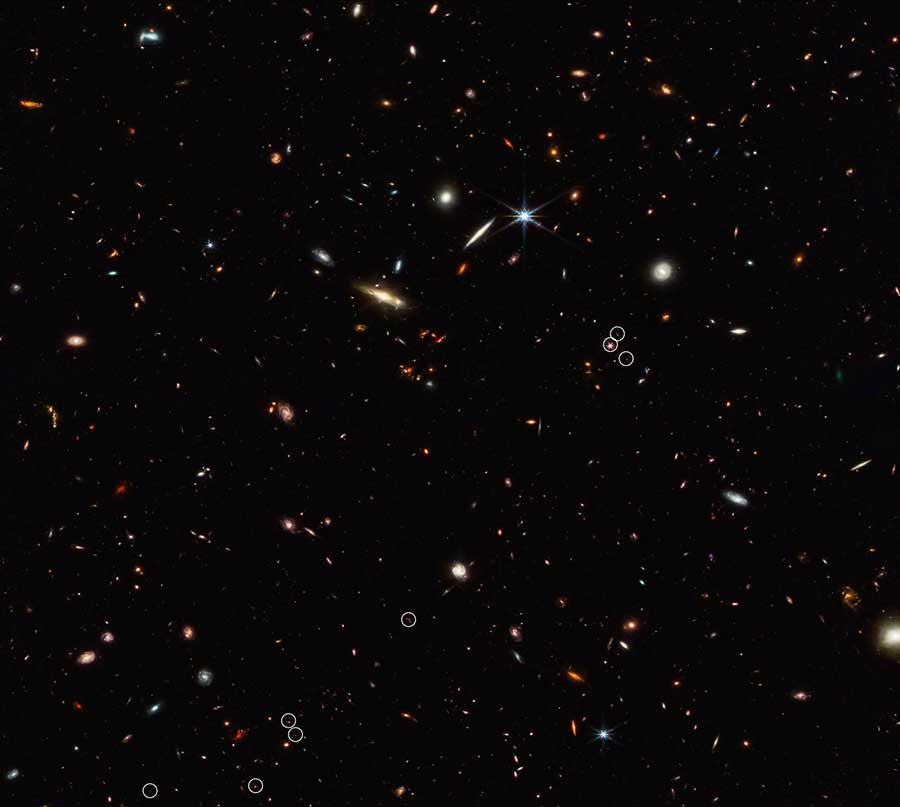For decades, astronomers have noticed that quasars and their host galaxies appear to grow together. This, despite the fact that even supermassive black holes don’t have the gravitational reach to affect much beyond their immediate surroundings. Perhaps, some theorized, a feeding black hole powers jets or winds or some other form of feedback that then regulates both its own growth and that of its host galaxy, so that the two grow in tandem. If that were the case, then we might expect that galaxies and the black holes they host would relate differently to each other over cosmic time as they interact.
However, Ding’s team found that, at least for the two quasars they examined, the relation between the black hole mass and galactic stellar mass is exactly what we observe in nearer quasars. (Interestingly, the more recently discovered CEERS quasar also matches this relation, even though it hails from even earlier times.)
Gebhardt says he’s surprised at the result. “It’s a really hard measurement to get the stellar mass, and my initial reaction when reading the abstract was to be skeptical,” he adds. “But [the researchers] have done a great job throughout.”
It could be that the supermassive black holes in these two galaxies have already powered feedback even at such early times. These two quasars might even be fast-evolving outliers that are not representative of the evolution of most galaxy–black hole pairs. While two data points aren’t enough to draw firm conclusions, there are many more early quasars awaiting JWST observation. Soon, our window on the early evolution of supermassive black holes will expand into a fuller picture.



